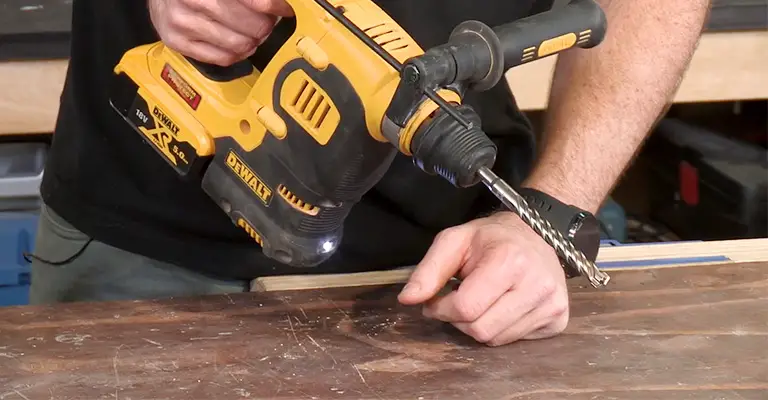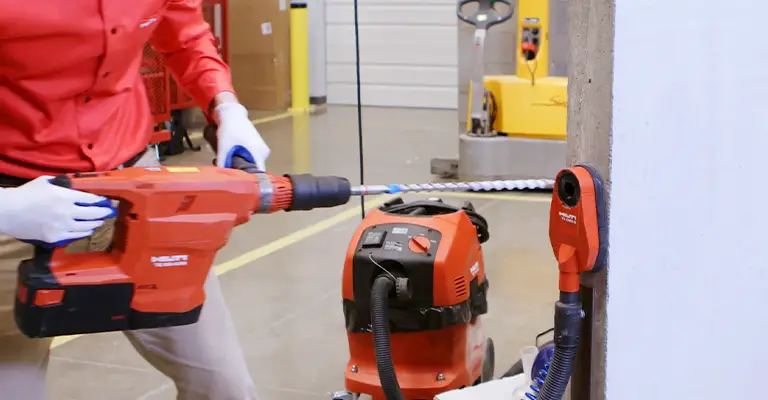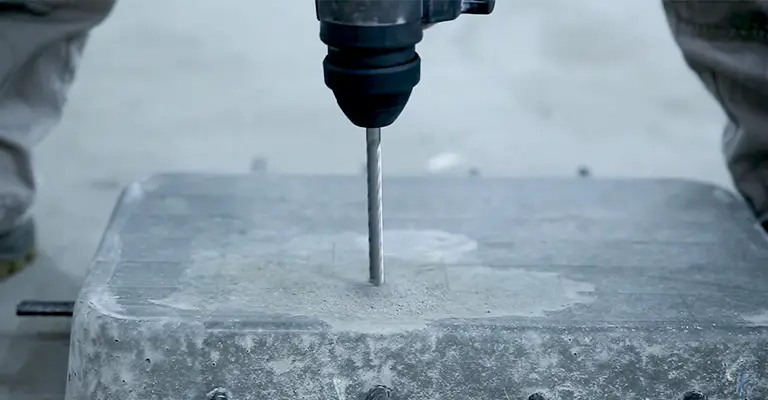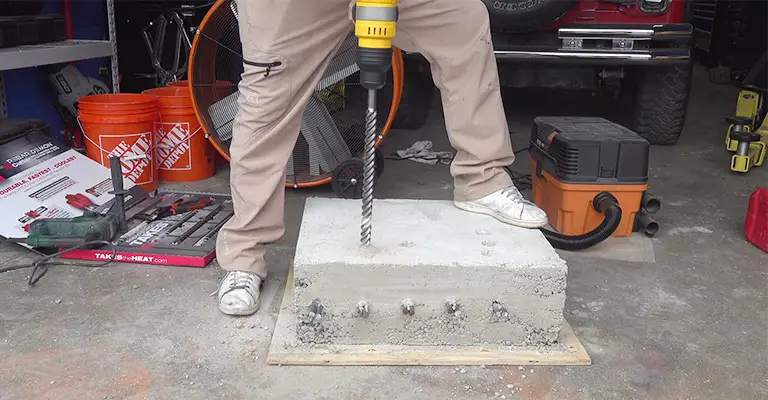To drill a hole in concrete for a 1/2-inch rebar, you will need to use a 5/8-inch or larger drill bit. It’s important to use the right size drill bit to ensure that the hole is the correct size for the rebar and can support the structure’s weight.
It’s also a good idea to use a hammer drill with a masonry bit to make the drilling process easier and more efficient. Using a smaller drill bit could result in a too-small hole for the rebar, which could cause the rebar to bend or break.
Using a larger drill bit could result in a too-big hole, which could cause the rebar to move or shift when the concrete is poured. Here are a few other tips for drilling into concrete:
- Be sure to wear safety glasses to protect your eyes from debris.
- Start by drilling a small pilot hole to make it easier to align the larger drill bit.
- Keep the drill bit cool by occasionally dipping it in water. This will help prevent the bit from overheating and extend its life.
- Use steady, even pressure when drilling to ensure that the hole is straight and that the rebar will be able to fit properly.
- If possible, try to drill at a slow speed to minimize the dust and debris created.
- Use a hammer and chisel to remove any excess concrete from the hole after drilling. This will help ensure that the rebar fits properly and is securely anchored.

Anchoring Bolts, Railings, And Rebar In Concrete With Anchoring Epoxy
Anchoring epoxy is a strong, versatile adhesive that can be used to anchor bolts, railings, and rebar in concrete.
It is a two-part epoxy that is mixed together and then applied to the base material (bolts, railings, or rebar) before being inserted into the hole in the concrete.
Once the epoxy has cured, it forms a strong bond with the concrete, providing a secure and reliable anchor for the base material.
To use anchoring epoxy, you will need to follow these steps:

- Start by preparing the concrete surface where the anchor will be installed. This may involve cleaning the surface and removing any debris or loose material.
- Next, mix the two parts of the epoxy according to the manufacturer’s instructions. This typically involves combining the resin and the hardener in a mixing container and stirring them together until they are well-blended.
- Using a brush or spatula, apply the mixed epoxy to the base material (bolts, railings, or rebar). Coat the base material evenly and thoroughly to ensure a strong bond.
- Insert the base material into the concrete’s hole, ensuring that it is properly aligned and seated.
- Allow the epoxy to cure according to the manufacturer’s instructions. This will typically take several hours, but the exact cure time will depend on the specific product and the temperature and humidity conditions.
- Once the epoxy has cured, it will form a strong bond with the concrete, providing a secure anchor for the base material. You can then use the anchored bolts, railings, or rebar for your project.
Overall, anchoring epoxy is a reliable and effective way to anchor bolts, railings, and rebar in concrete. It provides a strong, permanent bond that can support heavy loads, making it ideal for use in various construction and repair projects.
How Big A Hole Do I Have To Drill In Concrete To Embed Rebar In It?

To embed rebar in concrete, you will need to drill a hole that is slightly larger than the diameter of the rebar. For example, if you are using 1/2-inch rebar, you will need to drill a hole that is 5/8-inch or larger.
This will ensure that the rebar fits securely in the hole and can support the weight of the structure.
It’s important to use the correct size drill bit to ensure that the hole is the right size for the rebar. Using a smaller drill bit could result in a too small hole for the rebar, which could cause the rebar to bend or break.
Using a larger drill bit could result in a too big hole, which could cause the rebar to move or shift when the concrete is poured.
Generally, it’s a good idea to use a hammer drill with a masonry bit to drill into concrete. This type of drill is specifically designed for drilling into masonry materials and will make the drilling process easier and more efficient.
It’s also a good idea to wear safety glasses to protect your eyes from debris and to keep the drill bit cool by occasionally dipping it in water. This will help prevent the bit from overheating and extend its life.
Drill Bits For Concrete And Rebar

To drill into concrete and rebar, you will need to use a special drill bit known as a masonry bit.
These bits are designed specifically for drilling into masonry materials such as concrete and are made from materials that can withstand the high levels of heat and friction generated during the drilling process.
When choosing a masonry bit for drilling into concrete and rebar, it’s important to select the right size and type of bit for your specific project.
For example, if drilling into a 1/2-inch rebar, you will need to use a 5/8-inch or larger masonry bit.
If you are drilling into thicker rebar or concrete, you may need to use a larger bit to ensure that the hole is the right size for the rebar. In addition to size, you will also need to consider the type of masonry bit that is best suited to your project.
Some common masonry bits include carbide-tipped, diamond-tipped, and tungsten carbide-tipped bits. Each of these types of bits has its unique properties and is best suited for different projects.
Choosing the right drill bits for drilling into concrete and rebar is essential for ensuring that your project is successful.
Be sure to select the right size and type of bit for your project and use a hammer drill with a masonry bit to make the drilling process easier and more efficient.
Final Words
In conclusion, drilling into concrete and rebar requires using special masonry bits designed to withstand the high levels of heat and friction generated during the drilling process.
When choosing a masonry bit for your project, selecting the right size and type of bit for your specific needs is important.
Using the correct size and type of bit will help to ensure that the hole is the right size for the rebar and that it can support the weight of the structure.
It’s also a good idea to use a hammer drill with a masonry bit to make the drilling process easier and more efficient.






